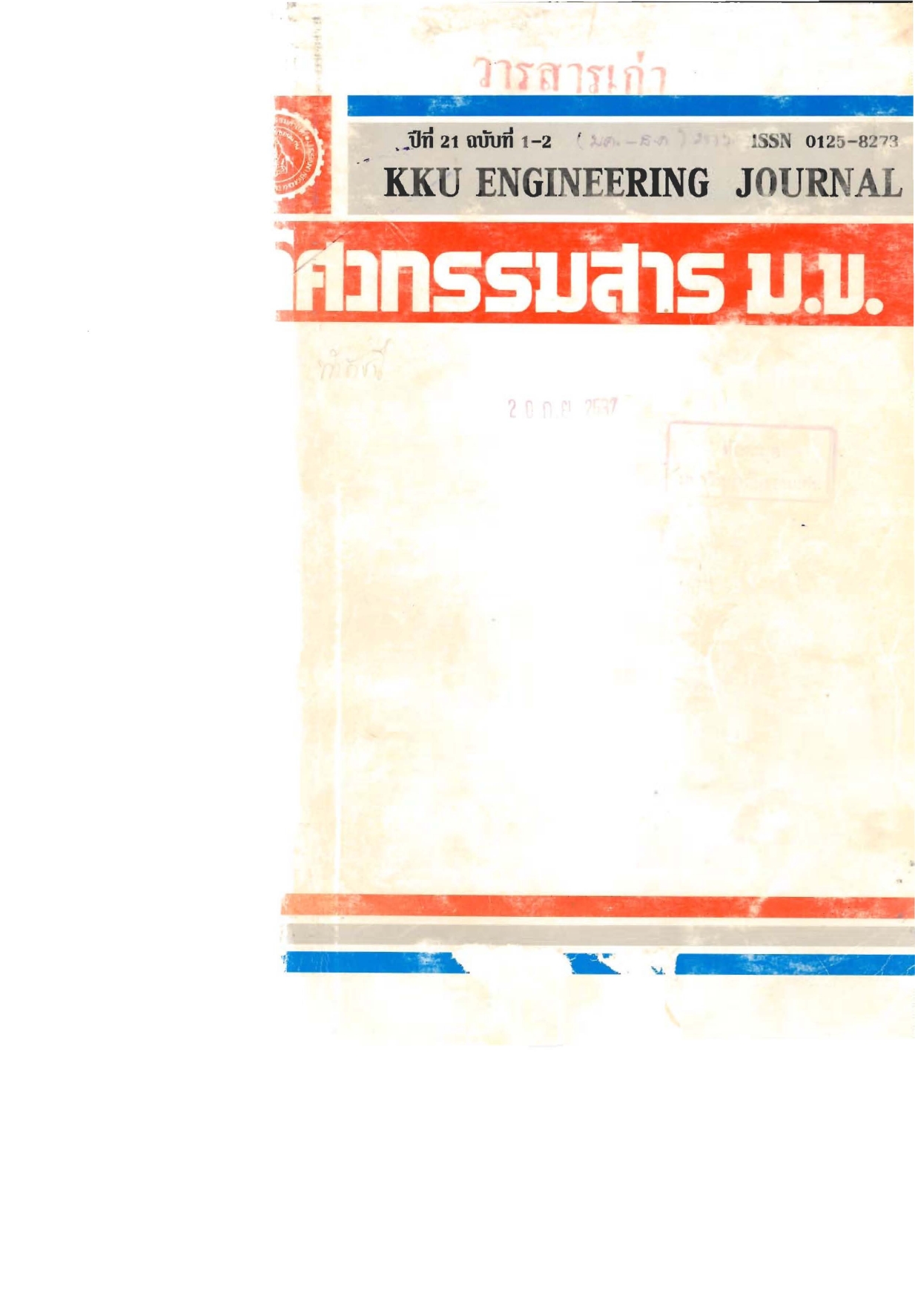Study on the Effects of Various Irrigation Methods on Tomato Seed Production
Main Article Content
Abstract
The experiment was conducted to investigate the effect of irrigation methods
and levels on yield and quality of hybrid tomato seeds and it also amied to comparative
by study the contruction and running costs when the seeds were grown on sandy loam
and clay soil on the farmer fields in Khon Kaen during October 1986 to February 1987. The
irrigation methods were: bucket watering, drip irrigation and furrow irrigation where as
the 3 levels of water were 2 4 and 6 I/sq.m1d
The results from the sandy loam plot showed that the irrigation method did not
have a significant effect on total seed yield. The seed yield obtained from furrow irrigation
was significantly lower than those of bucket watering and drip irrigation.
Regarding the irrigation levels, it was found that irrigating at 2 I/sq.m1d. gave
poorer those yield and quality than from higher irrigation levels of 4 and 6 I/sq.m1d. In
addition, furrow irrigation also resulted in higher proportion of fruits but showing a
symtom of blossom end rot.
In clay soil, the bucket watering and drip irrigation gave a significantly higher
fruit weight and seed yield than furrow irrigation. The optimum water level frund in this
type of soil was about 4 I/sq,m1d. From comparing the irrigation cost, it was shown that the cost of bucket watering, furrow irrigation and drip irrigation were 1,465 1,839 and
2,151 Baht respectively (for growing 1,000 tomato plants).
and levels on yield and quality of hybrid tomato seeds and it also amied to comparative
by study the contruction and running costs when the seeds were grown on sandy loam
and clay soil on the farmer fields in Khon Kaen during October 1986 to February 1987. The
irrigation methods were: bucket watering, drip irrigation and furrow irrigation where as
the 3 levels of water were 2 4 and 6 I/sq.m1d
The results from the sandy loam plot showed that the irrigation method did not
have a significant effect on total seed yield. The seed yield obtained from furrow irrigation
was significantly lower than those of bucket watering and drip irrigation.
Regarding the irrigation levels, it was found that irrigating at 2 I/sq.m1d. gave
poorer those yield and quality than from higher irrigation levels of 4 and 6 I/sq.m1d. In
addition, furrow irrigation also resulted in higher proportion of fruits but showing a
symtom of blossom end rot.
In clay soil, the bucket watering and drip irrigation gave a significantly higher
fruit weight and seed yield than furrow irrigation. The optimum water level frund in this
type of soil was about 4 I/sq,m1d. From comparing the irrigation cost, it was shown that the cost of bucket watering, furrow irrigation and drip irrigation were 1,465 1,839 and
2,151 Baht respectively (for growing 1,000 tomato plants).
Article Details
How to Cite
JeeravipoolvlllD, B., JUllDgp8nich, M., MIlIDate, V., & KovithyakorD, L. (2013). Study on the Effects of Various Irrigation Methods on Tomato Seed Production. Engineering and Applied Science Research, 22(2), 21–27. retrieved from https://ph01.tci-thaijo.org/index.php/easr/article/view/8123
Issue
Section
ORIGINAL RESEARCH
This work is licensed under a Creative Commons Attribution-NonCommercial-NoDerivatives 4.0 International License.



